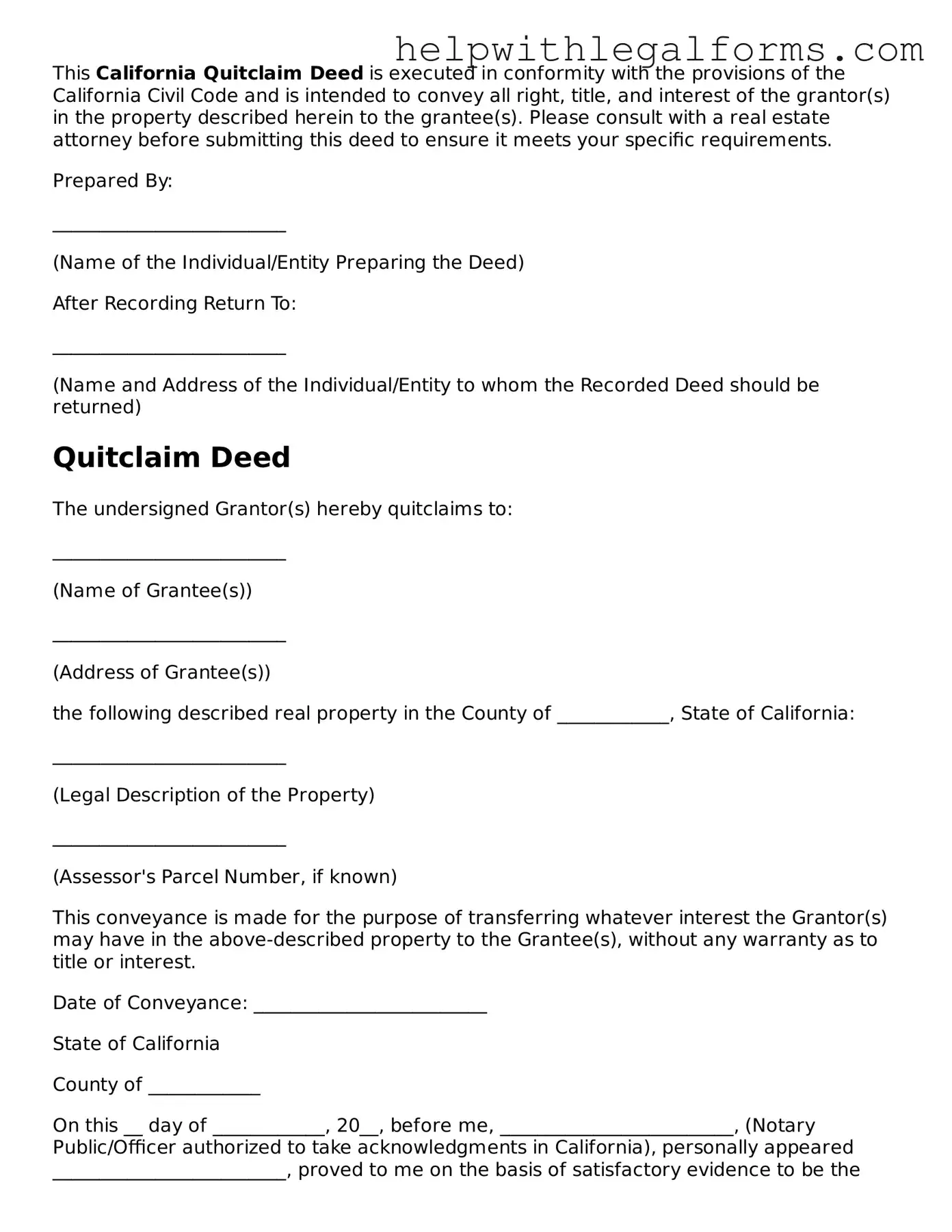This California Quitclaim Deed is executed in conformity with the provisions of the California Civil Code and is intended to convey all right, title, and interest of the grantor(s) in the property described herein to the grantee(s). Please consult with a real estate attorney before submitting this deed to ensure it meets your specific requirements.
Prepared By:
_________________________
(Name of the Individual/Entity Preparing the Deed)
After Recording Return To:
_________________________
(Name and Address of the Individual/Entity to whom the Recorded Deed should be returned)
Quitclaim Deed
The undersigned Grantor(s) hereby quitclaims to:
_________________________
(Name of Grantee(s))
_________________________
(Address of Grantee(s))
the following described real property in the County of ____________, State of California:
_________________________
(Legal Description of the Property)
_________________________
(Assessor's Parcel Number, if known)
This conveyance is made for the purpose of transferring whatever interest the Grantor(s) may have in the above-described property to the Grantee(s), without any warranty as to title or interest.
Date of Conveyance: _________________________
State of California
County of ____________
On this __ day of ____________, 20__, before me, _________________________, (Notary Public/Officer authorized to take acknowledgments in California), personally appeared _________________________, proved to me on the basis of satisfactory evidence to be the person(s) whose name(s) is/are subscribed to the within instrument, and acknowledged to me that he/she/they executed the same in his/her/their authorized capacity(ies), and that by his/her/their signature(s) on the instrument, the person(s), or the entity upon behalf of which the person(s) acted, executed the instrument.
Witness my hand and official seal:
_________________________
(Signature of Notary)
_________________________
(Printed Name of Notary)
_________________________
(Notary Public Seal)
Instructions for Completing the Quitclaim Deed
- Fill in all the blanks with the appropriate information.
- Ensure the grantor(s) sign(s) the deed in the presence of a notary public or an officer authorized to take acknowledgments in California.
- Record the executed deed with the county recorder's office in the county where the property is located to make the deed legally effective.
Note: This form is provided without any warranty, express or implied, as to its legal effect and completeness. It is recommended that the services of a competent professional are sought if you have questions regarding a quitclaim deed or its implications.
